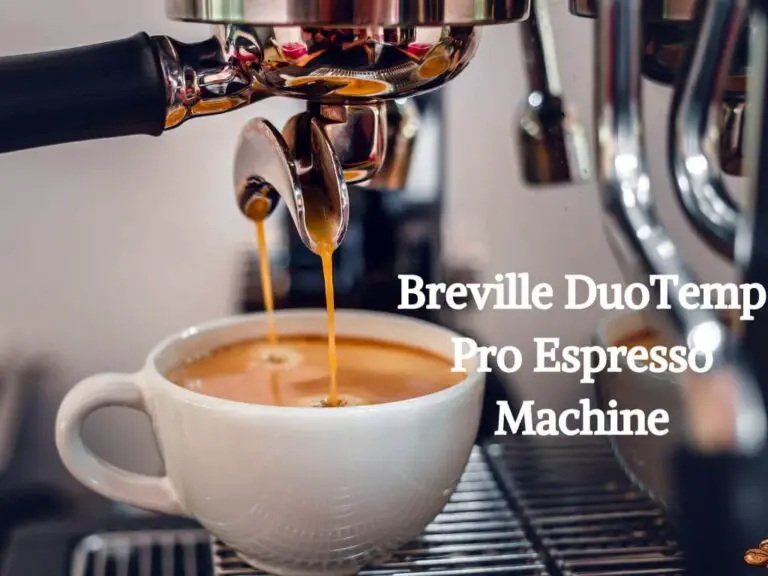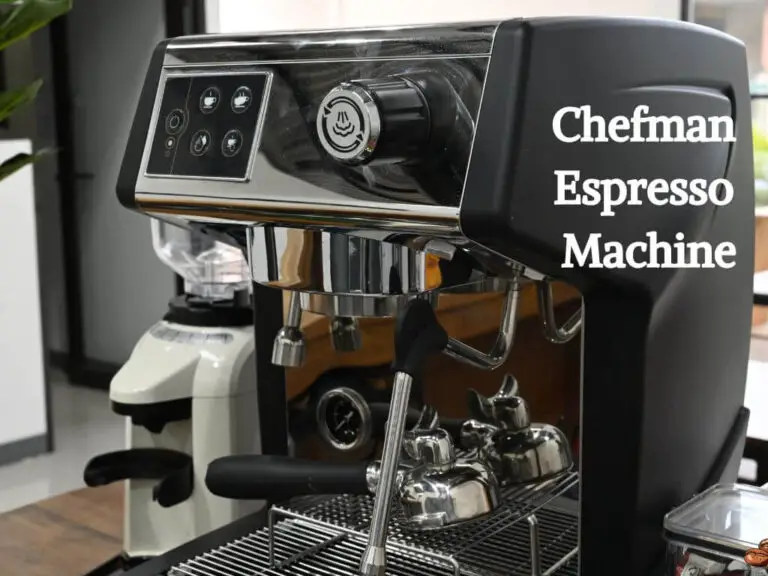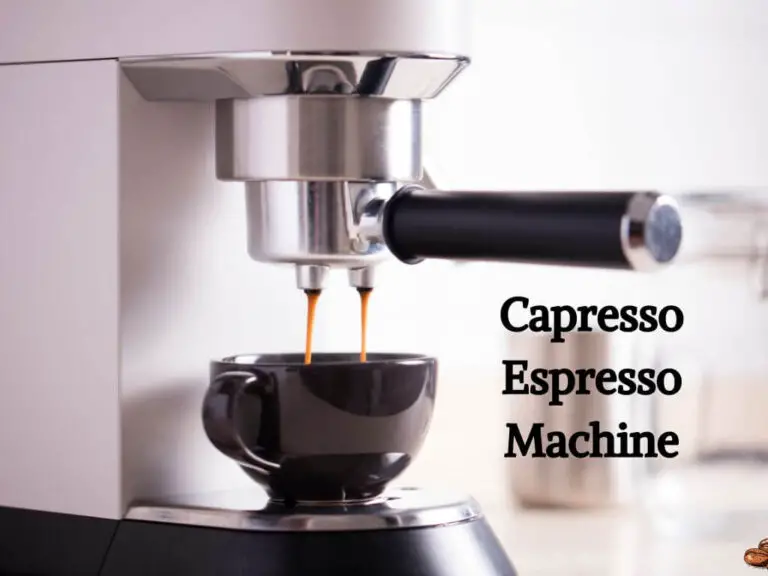How Does a Percolator Coffee Maker Work? Step-by-Step Brewing Explained
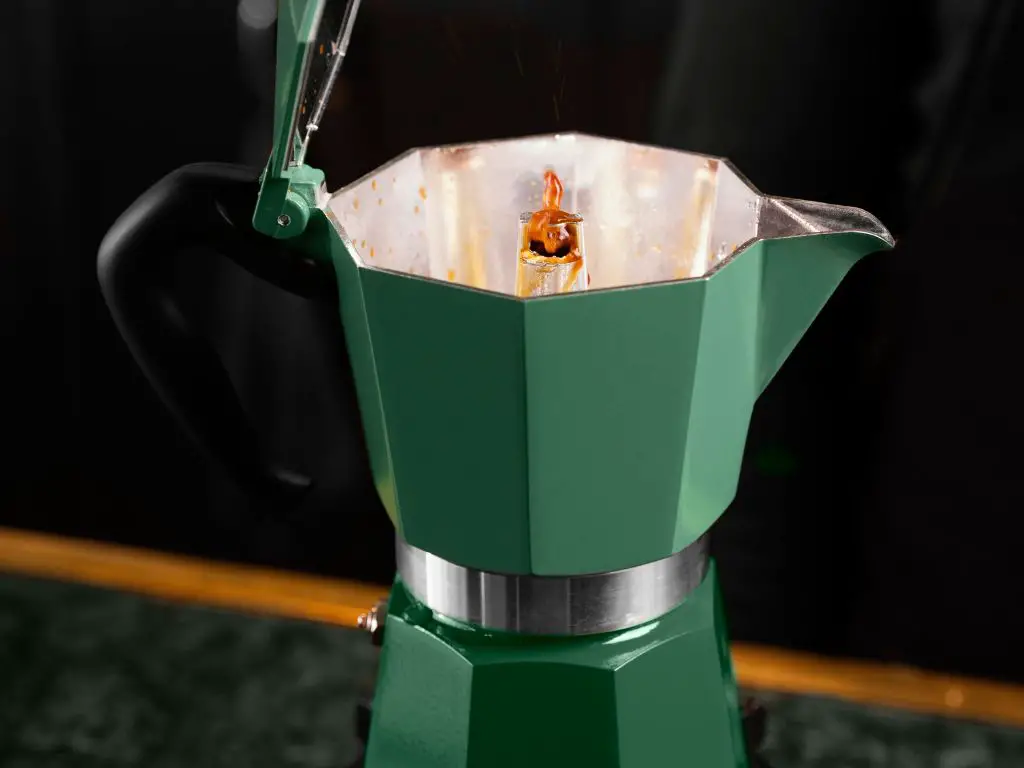
A percolator coffee maker works by cycling hot water through coffee grounds to extract the flavor and create a strong, bold brew. Coffee lovers who crave a robust cup of joe in the morning often turn to the classic percolator coffee maker.
As a coffee lover, I am always intrigued by the different brewing methods used to create the perfect cup of joe. One method that has stood the test of time is the percolator coffee maker. In this article, I will dive deep into the art of brewing with a percolator coffee maker and explain how it works. Whether you’re a coffee connoisseur or just curious about the process, this article will provide you with all the information you need.
The History of Percolators
Before we delve into the inner workings of a percolator coffee maker, let’s take a step back and explore its rich history. Percolators have been used for centuries to brew coffee, making them one of the oldest methods of coffee preparation. The earliest known percolator dates back to the 19th century, and since then, they have undergone several improvements to enhance the coffee brewing experience.
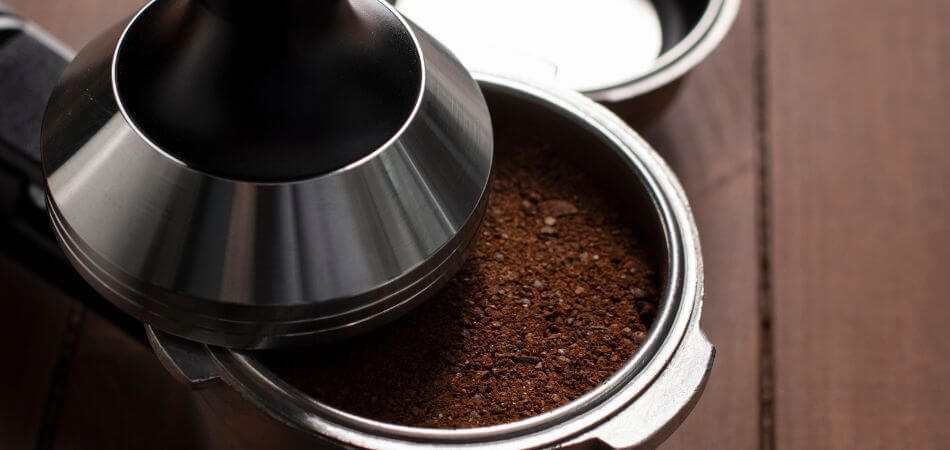
Working Principle Of A Percolator Coffee Maker
A percolator coffee maker is a classic brewing method that has been used for many years to make deliciously strong and flavorful coffee. The working principle of a percolator coffee maker involves the heating and circulation of water, the extraction of ground coffee, and the brewing and percolation process. Let’s dive deeper into each of these steps to understand how a percolator coffee maker works.
Water Heating And Circulation
One of the key components of a percolator coffee maker is its heating element, typically located at the bottom of the unit. When you start brewing, the heating element heats the water inside the reservoir. As the water heats up, it begins to circulate through a small tube called the riser pipe. This pipe runs from the bottom of the reservoir to the top of the percolator, allowing the hot water to move upward.
Ground Coffee Extraction
While the water is heating and circulating, it comes into contact with the ground coffee placed in the percolator basket. The basket is usually situated above the riser pipe, allowing the hot water to pass through the coffee grounds. As the water flows through the grounds, it extracts the aromatic oils and flavors, creating a rich coffee concentrate. The longer the water is in contact with the coffee grounds, the stronger the coffee will be.
Brewing And Percolation Process
Once the water has passed through the coffee grounds, it continues its journey upwards through a small tube inside the percolator called the brew pipe. This pipe disperses the brewed coffee evenly over the top of the percolator before it drips down onto a perforated spreader plate. The spreader plate is designed to distribute the coffee evenly and prevent it from overflowing.
As the coffee drips onto the spreader plate, it cascades down onto the coffee grounds, repeating the brewing and percolation process. This continuous cycle ensures that the coffee remains in contact with the grounds, allowing for complete extraction and full-bodied flavor.
In summary, the working principle of a percolator coffee maker involves heating and circulating water, extracting flavors and aromas from the ground coffee, and the brewing and percolation process. This traditional brewing method creates a robust and intense coffee experience, perfect for those who appreciate a strong cup of joe.
Components Of A Percolator
A percolator coffee maker consists of various components that work together to deliver a piping hot and flavorful brew. These components include a water chamber, a heating element, a brewing basket, and a percolation tube. The water in the chamber is heated, creating pressure that forces the hot water through the coffee grounds in the brewing basket and up the percolation tube, resulting in a delicious cup of coffee.
Main Body
Understanding the components of a percolator is essential if you want to truly grasp how this classic coffee maker works. A percolator consists of several key elements that work harmoniously to brew a delicious cup of coffee. These components include the coffee chamber, the percolator tube, and the heat source, whether it is electric or stovetop.
Coffee Chamber
The coffee chamber is the heart of the percolator. It acts as a reservoir where you add your ground coffee and water. This chamber is usually made of metal and is cylindrical in shape. Some percolators have a transparent glass knob on top of the chamber, allowing you to observe the coffee as it percolates.
Percolator Tube
The percolator tube is a vertical pipe that runs through the center of the coffee chamber. It extends from the bottom of the chamber all the way to the top, reaching near the lid. The tube has small holes or slots along its length, allowing hot water to flow upwards.
The percolator tube serves multiple functions in the brewing process. As the water in the chamber heats up, it creates steam that travels through the tube. The steam rises and forces the hot water to bubble up from the bottom of the chamber and over the coffee grounds. This continuous circulation of water and steam ensures that the coffee is properly brewed and infused with rich flavors.
Heat Source (electric Or Stovetop)
The heat source is the final vital component of the percolator. It determines how the water in the coffee chamber is heated. Percolators can either be electric or stovetop models.
An electric percolator contains a built-in heating element that is powered by electricity. Once plugged in, the heating element rapidly heats the water in the coffee chamber, creating the necessary conditions for brewing. Electric percolators typically have temperature control settings, allowing you to adjust the heat level according to your preferences.
On the other hand, a stovetop percolator requires an external heat source such as a gas or electric stove. You place the percolator directly on the stove, and the heat from the burner beneath the percolator chamber gradually warms up the water. Stovetop percolators often have adjustable heat settings, allowing you to control the brewing process manually.
Both electric and stovetop percolators are capable of producing a rich and aromatic cup of coffee. The choice between the two depends on personal preference and convenience.

Monitoring And Adjusting
The percolator coffee maker works by monitoring and adjusting the brewing process, ensuring a perfect cup of coffee every time. The water is heated in the bottom chamber, and as it boils, it is forced through a tube and onto the coffee grounds.
The coffee then percolates back into the bottom chamber, creating a rich and flavorful brew.
Importance Of Monitoring The Percolation Process
One of the key aspects of achieving a perfect cup of coffee with a percolator coffee maker is closely monitoring the percolation process. Monitoring allows you to keep a close eye on the brewing progress and make necessary adjustments to ensure the best coffee flavor and strength. By understanding the importance of monitoring, you can master the art of brewing with a percolator.
While a percolator operates on a simple principle of water cycling from the bottom chamber to the top, monitoring the coffee-making process can greatly influence the final outcome. Throughout the percolation process, it’s crucial to pay attention to the water temperature, brewing time, and color of the coffee. This level of attentiveness allows you to achieve the perfect balance and avoid over-extraction or under-extraction that can result in a bitter or weak brew.
Adjusting Brewing Time For Desired Coffee Strength
The beauty of using a percolator coffee maker lies in the ability to adjust the brewing time to achieve the desired coffee strength. Whether you prefer a bold, robust cup of coffee or a milder taste, the brewing time can be tailored to suit your individual preferences. By finely tuning the brewing time, you can customize your coffee to match your taste preferences.
To adjust the brewing time, you can experiment with various factors such as grind size, heat intensity, and amount of coffee grounds. Each tweak can have an impact on the rate at which the water percolates through the coffee grounds, ultimately affecting the strength of your brew. It may require a few trials and adjustments, but by keeping a close eye on the brewing time, you can master the art of brewing the perfect cup of coffee with your percolator.
Monitoring and adjusting the percolation process is an essential part of achieving your favorite cup of coffee. By observing the brewing progress and making necessary tweaks, you can optimize the flavor, strength, and aroma of your coffee. Remember, every coffee lover has their own preferences, so don’t be afraid to experiment and find the ideal brewing time that suits your taste buds.
Pros And Cons Of Percolator Coffee Makers
Percolator coffee makers offer a rich and robust flavor, but they can also lead to over-extraction and a bitter taste. These machines work by continuously cycling hot water through coffee grounds, resulting in a strong and distinct brew. However, the longer brewing process can be time-consuming and may require more effort than other coffee maker options.
Advantages Of Using A Percolator
A percolator coffee maker has its fair share of advantages that make it a popular choice among coffee enthusiasts. Let’s take a closer look at some of the advantages:
- Strong and Bold Flavor: One of the biggest advantages of using a percolator coffee maker is the strong and bold flavor it delivers. The percolation process allows the water to circulate through the coffee grounds multiple times, extracting the maximum flavor and aroma.
- Customizable Brew: Percolators offer a level of customization that many other coffee makers may lack. You can adjust the brewing time and determine the strength of your coffee by simply monitoring the brewing cycle. This allows you to achieve the perfect cup of coffee according to your personal preferences.
- Durability: Percolators are typically made from durable materials such as stainless steel or aluminum, ensuring their longevity. They are built to withstand high temperatures and frequent use, making them a great investment for coffee lovers.
- Portability: If you enjoy camping or traveling, a percolator coffee maker can be your best friend. These compact and lightweight coffee makers are easy to carry and can be used over a camping stove or fire, allowing you to enjoy a freshly brewed cup of coffee even in the great outdoors.
Disadvantages Of Using A Percolator
While percolator coffee makers have their advantages, there are a few downsides to consider as well. Let’s explore some of the disadvantages:
- Potential Over-Extraction: Due to the nature of the percolation process, there is a risk of over-extracting the coffee grounds if the brewing time is not carefully monitored. This can result in a bitter and overpowered taste, compromising the overall coffee experience.
- Lack of Precision: Unlike more modern coffee makers, percolators do not offer precise temperature control or brewing settings. This lack of precision can make it challenging to achieve consistent results every time you brew coffee with a percolator.
- Requires Monitoring: Brewing coffee with a percolator requires constant monitoring to ensure that you do not over-brew your coffee. You need to pay close attention to the brewing time and adjust it accordingly to avoid ending up with a less desirable cup of coffee.
- Can Be Time-Consuming: The percolation process usually takes longer compared to other brewing methods. If you’re in a hurry or prefer a faster brewing time, a percolator may not be the best choice for you.

. Maintenance And Cleaning
When it comes to enjoying a delicious cup of coffee, maintenance and cleaning play a crucial role in keeping your percolator coffee maker in top condition. A clean percolator not only ensures the coffee tastes fresh and flavorful, but it also prolongs the lifespan of your appliance. In this section, we will discuss the importance of regular cleaning and provide a step-by-step guide on how to descale your percolator to keep it working efficiently.
Regular Cleaning Routine
Maintaining a regular cleaning routine for your percolator coffee maker is essential for optimal performance. Regular cleaning helps to remove residue, oils, and mineral deposits that accumulate over time, ensuring your coffee always tastes its best. Follow these simple steps to perform a regular cleaning on your percolator:
- Start by unplugging the percolator and allowing it to cool down completely.
- Remove the filter basket and discard any used coffee grounds.
- Wash the filter basket, the coffee chamber, and the percolator stem with warm, soapy water. Use a soft brush or sponge to clean all the nooks and crannies.
- Rinse thoroughly with clean water to remove any soap residue.
- Dry all the components completely before reassembling them.
- Once the percolator is completely dry, it is ready for the next use.
Descaling The Percolator
Over time, the build-up of mineral deposits, especially if your water is hard, can affect the performance of your percolator. Descaling your percolator helps to remove these deposits and restore its efficiency. Follow these steps to descale your percolator:
- Fill the coffee chamber with a mixture of equal parts vinegar and water.
- Place the percolator stem and filter basket back into the percolator.
- Plug in the percolator and bring the solution to a boil.
- Allow the mixture to percolate for about 15 minutes.
- Once the descaling process is complete, unplug the percolator and discard the vinegar-water mixture.
- Rinse the coffee chamber, percolator stem, and filter basket thoroughly with clean water.
- Dry all the components completely before reassembling.
- Your percolator is now descaled and ready for use.
By following a regular cleaning routine and descaling your percolator coffee maker as needed, you can ensure that it continues to brew delicious coffee while maintaining its longevity. Incorporating these maintenance practices into your coffee routine will help you enjoy a consistently great cup of coffee, every time.
Tips For Brewing With A Percolator
Brewing coffee with a percolator is a wonderful way to enjoy a rich and bold cup of joe. It’s a classic brewing method that has stood the test of time, and with a few tips, you can make the most out of your percolator coffee maker.
Choosing The Right Grind Size
Grind size is a crucial factor that affects the flavor and strength of your coffee when using a percolator. To ensure optimal extraction, it’s important to use the correct grind size. For percolator brewing, a coarse grind is preferred. The larger particles allow the water to flow through the grounds, resulting in a flavorful and robust cup of coffee.
- Experimenting With Coffee-t
- o-water Ratios
As with any brewing method, the coffee-to-water ratio plays a significant role in achieving the perfect brew with a percolator. The general guideline is to use approximately 1 tablespoon of coffee grounds per 6 ounces of water. However, you can adjust this ratio according to your personal preference. If you prefer stronger coffee, you can increase the amount of coffee grounds, or if you prefer a milder flavor, you can decrease it. Don’t be afraid to experiment and find the ratio that suits you best.
Adjusting Brewing Time Based On Personal Preferences
The brewing time in a percolator is primarily determined by your personal taste preferences. Some coffee lovers prefer a shorter brewing time for a milder flavor, while others enjoy a longer brewing time for a stronger and more robust cup of coffee. It’s essential to adjust the brewing time to suit your palate.
Start by following the manufacturer’s instructions for the recommended brewing time. From there, you can make modifications to meet your preferences. If you find the coffee tastes too weak, try extending the brewing time by a few minutes. On the other hand, if the coffee tastes too strong, you can shorten the brewing time.
Remember, each percolator coffee maker is unique, so experimentation is key to finding your perfect cup of coffee. With a suitable grind size, the right coffee-to-water ratio, and a personalized brewing time, you’ll be able to enjoy a delicious and satisfying brew every time.
Different types of percolator coffee makers
Percolator coffee makers come in various shapes and sizes. Let’s explore some of the different types available. The stovetop percolator is a classic design that is placed directly on a heat source, such as a gas or electric stove. Electric percolators, on the other hand, are standalone units that plug into an electrical outlet and heat the water automatically.
Another type is the camping percolator, which is specifically designed for outdoor use. These percolators are often made from durable materials like stainless steel and can be used over an open flame or campfire. Each type of percolator has its own unique features and advantages, so choose one that best suits your needs and brewing preferences.
Comparing percolators to other coffee brewing methods
Now that we’ve explored the ins and outs of percolator coffee makers, let’s compare them to other popular brewing methods. One of the most well-known alternatives is the drip coffee maker. Drip coffee makers are easy to use and produce consistent results, but some argue that they lack the depth and intensity of flavor that percolators offer.
Another popular option is the French press. French presses are known for their ability to create a rich and full-bodied cup of coffee, but they require a coarser grind and a longer brewing time compared to percolators. Ultimately, the best brewing method for you will depend on your personal preferences and the type of coffee experience you seek.
Popular brands of percolator coffee makers
If you’re in the market for a percolator coffee maker, there are several reputable brands to consider. One well-known brand is Bialetti, which offers a range of stovetop percolators in different sizes. Another popular option is Farberware, known for their durable and reliable electric percolators. Cuisinart and Presto are also respected brands that offer a variety of percolator models to choose from.
Final Verdict
The final verdict on how a percolator coffee maker works: Through a repetitive process, boiling water is forced up a tube and then drips over coffee grounds, creating a strong brewed coffee. The percolation method offers a rich and flavorful cup of joe.
Summary Of The Percolation Process
A percolator coffee maker is an age-old method of brewing coffee that relies on the principle of water circulation to extract the rich and robust flavors from the coffee grounds. In a nutshell, the percolation process involves boiling water, which then rises up through a tube called the percolator pipe, before being dispersed over the coffee grounds.
Once the water reaches the top of the percolator pipe, gravity takes over, and it drips back down, passing through the coffee grounds multiple times. This continuous cycle of water rising and falling ensures maximum flavor extraction, resulting in a distinctively bold and aromatic cup of coffee.
Closing Thoughts On The Percolator Coffee Maker’s Functionality
The percolator coffee maker has stood the test of time and remains a popular choice, particularly for those who prefer a stronger brew. Its simple yet effective brewing method allows coffee enthusiasts to enjoy a full-bodied cup of joe without the need for fancy equipment or intricate brewing techniques.
Although the percolation process may not appeal to everyone, for those who appreciate the rich and robust flavors, this brewing method offers a distinctive experience. The coffee produced by a percolator tends to be strong, intense, and full of character. This makes it a favorite among those who crave a bolder flavor profile.
Furthermore, the simplicity of the percolator coffee maker’s design means that maintenance and cleanup are hassle-free. With no paper filters or complex parts to deal with, brewing a pot of coffee with a percolator is both easy and convenient.
In conclusion, the percolator coffee maker’s functionality is rooted in its ability to circulate water through the coffee grounds, resulting in a bold and robust cup of coffee. While it may not cater to every palate, those who enjoy a stronger brew will appreciate the unique flavors and simplicity provided by this classic brewing method.
Frequently Asked Questions For How Does A Percolator Coffee Maker Work
What Are The Drawbacks Of A Coffee Percolator?
Coffee percolators tend to produce a stronger and bitterer taste compared to other brewing methods. They can also over-extract the coffee, resulting in a burnt or overly bitter flavor. Additionally, the percolation process can lead to inconsistent brewing, with some parts of the coffee being under-extracted while others are over-extracted.
Why Did People Stop Using Percolators?
People stopped using percolators because drip coffee makers became more popular, offering convenience, consistent results, and easy cleanup.
How Does A Coffee Percolator Work?
A coffee percolator works by boiling water, which then rises through a tube and splashes over coffee grounds, extracting flavor. The brew then drips back into the pot, creating a cycle until the desired strength is reached. It’s a simple and effective way to make coffee.
How Long Do You Let Coffee Perk In A Percolator?
Coffee should be allowed to perk in a percolator for about 8 to 10 minutes.
Conclusion
To sum up, the percolator coffee maker is a simple yet efficient brewing method that imparts a bold and robust flavor to your coffee. With its signature bubbling and circulating action, the percolator extracts the essence of the beans, resulting in a rich and aromatic cup of coffee.
So, if you’re looking to enjoy a classic and satisfying coffee experience, consider giving the percolator a try. Experience the timeless charm of this brewing technique and savor every sip of your perfectly brewed coffee.

